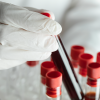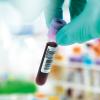Twice as many people as previously believed are dying of sepsis worldwide, according to a new analysis.

Among them are a disproportionately high number of children who are from poor areas.
Led by researchers at the medical schools of the University of Pittsburgh and the University of Washington, the study revealed 48.9 million global cases of sepsis in 2017 and 11 million deaths, representing one in five deaths worldwide.
The majority of sepsis – 85% – occurred in countries with low- or middle-sociodemographic status.
The highest burdens were found in sub-Saharan Africa; the South Pacific islands; and South, East, and Southeast Asia.
Sepsis incidence was higher among females than males and peaked in early childhood, with more than 40% of cases in children under five.
Dr Mohsen Naghavi, senior study author, said: “We are alarmed to find sepsis deaths are much higher than previously estimated, especially as the condition is both preventable and treatable.
“We need renewed focus on sepsis prevention among newborns and antimicrobial resistance – an important driver of the condition.”
For their analysis, Naghavi and colleagues leveraged the Global Burden of Disease study, a comprehensive epidemiological analysis, which reports on 282 primary causes of death, not including sepsis, which is considered an intermediate cause of death. A primary cause of death is the underlying condition (such as cancer), which leads to the intermediate cause (sepsis) that ultimately results in death.
Previous estimates were limited because they relied upon hospital databases from a select group of middle- and high-income countries.
The new findings are unprecedented as they represent mortality both in and out of the hospital.
Image credit | iStock




